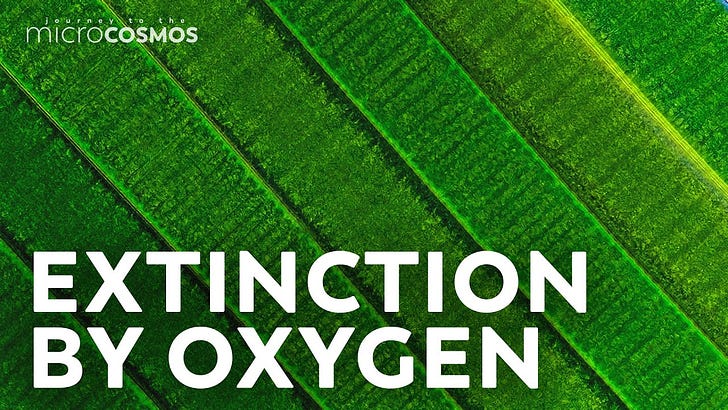Cyanobacteria, the large and diverse species of bacteria that obtain energy through photosynthesis, have profoundly shaped life's trajectory on Earth. Though they are prokaryotic bacteria, they are often called blue-green algae. Cyanobacteria were one of the earliest branching groups in the evolutionary tree of life. They gradually oxygenated the atmosphere over billions of years by producing oxygen through photosynthesis. Cyanobacteria continue to play crucial ecological roles today in diverse environments across the planet.
Evolutionary Origins and Impact
The earliest fossil record indicates that cyanobacteria flourished as early as 3.5 billion years ago during the Precambrian period and were among the first oxygenic photosynthesizers. Evidence shows they slowly enriched the primordial reducing atmosphere with oxygen via photosynthesis. “Cyanobacteria played an important role in the evolution of early Earth and the biosphere. They have been responsible for the oxygenation of the atmosphere and oceans since the Great Oxidation Event around 2.4 billion years ago, debatably earlier. They are also major primary producers in past and present oceans and the ancestors of the chloroplast.” (Demoulin et al, 2019) The Great Oxidation Event created an oxygen-rich environment, made respiration more efficient, and developed complex, multicellular oxygen-using organisms. The link between a photosynthetic cyanobacterium and a heterotrophic eukaryotic cell is the source of chloroplasts in modern plants and algae. Thus, these organelles that enable photosynthesis across taxa carry on the evolutionary legacy of cyanobacteria.
Habitats and Ecological Roles
Cyanobacteria display incredible adaptability, inhabiting diverse aquatic and terrestrial environments. In oceans, they are critical components of phytoplankton, forming extensive blooms visible from space. In freshwater, cyanobacteria thrive in lakes, rivers, and wetlands. They colonize bare rocks, desert crusts, Antarctica, and polar regions on land. Morphological changes like thick sheaths and akinetes that resemble hair aid in desiccation resistance. Cyanobacteria serve as the principal makers of organic molecules by converting inorganic carbon. Cyanobacteria helped build the first coral reefs by providing the corals with organic carbon. As the primary source of photosynthetic material in lichens, cyanobacteria also collaborate symbiotically with fungi. Others have close relationships with protists like euglenoids and plants like azolla.
Fixing Nitrogen to Fertilize Earth
Many cyanobacteria have the very important ability to change gaseous nitrogen into a form that living things can use. They do this through specialized heterocyst cells. In fact, before artificial fertilizers, cyanobacteria provided the bulk of usable nitrogen that sustains plant productivity, making them crucial for agriculture. Nitrogen-fixing cyanobacteria fulfill a vital step in the nitrogen cycle by fertilizing aquatic and terrestrial systems. “Cyanobacteria produce numerous secondary metabolites that can be useful for plants; for example, they can have growth-promoting effects or increase resistance to plant disease. Many secondary metabolites can also lessen the effects of biotic and abiotic stress.”(Kollmen & Streight, 2022)
Toxins and Benefits
Cyanobacteria are infamous for producing cyanotoxins that can harm humans, animals, and ecosystems. Toxic blooms, known colloquially as “blue-green algae,” pose contamination risks for drinking water and recreational waters. However, many species are nontoxic and edible. Cyanobacteria like Arthrospira and Nostoc have high nutritional value and are cultivated as health supplements. Beyond nutrition, cyanobacteria synthesize diverse bioactive compounds with antiviral, anticancer, and anti-inflammatory activities. Their rich secondary metabolism is a source of promising pharmaceutical leads. Ecologically engineered cyanobacteria also show promise for renewable bioplastics and biofuel production.
Conclusion
From sculpting Earth’s atmosphere over three billion years ago to supplying nutrients in the present day, cyanobacteria have left an indelible legacy central to the development of life. These versatile early colonizers continue to offer solutions for medicine, biotechnology, and ecology, while their evolutionary impact remains recorded in the oxygen we breathe.
Sources
Demoulin, C. F., Lara, Y. J., Cornet, L., François, C., Baurain, D., Wilmotte, A., & Javaux, E. J. (2019). Cyanobacteria evolution: Insight from the fossil record. Free Radical Biology & Medicine, 140, 206-223. https://doi.org/10.1016/j.freeradbiomed.2019.05.007
Kollmen, J., & Strieth, D. (2022). The Beneficial Effects of Cyanobacterial Co-Culture on Plant Growth. Life, 12(2). https://doi.org/10.3390/life12020223



